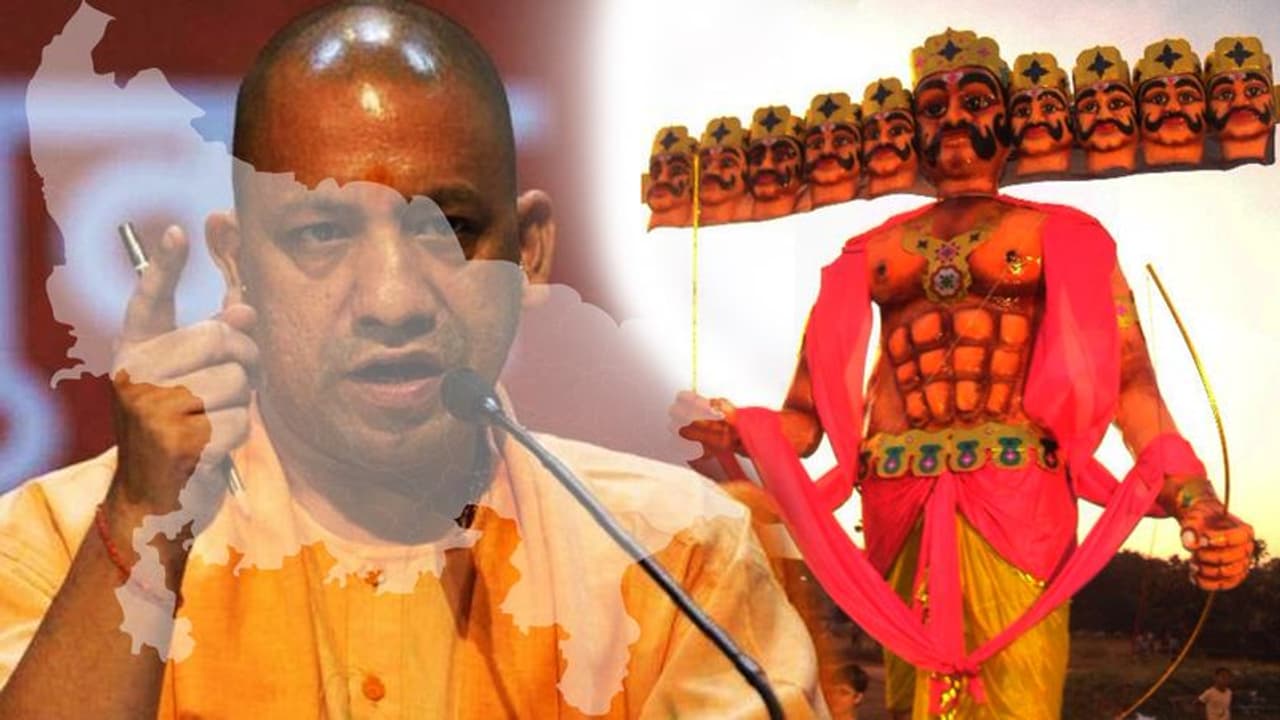Uttar Pradesh CM Yogi Adityanath felt 'Ravan' was an inauspicious name, which parents would not want their children to have. He felt 'Allahabad' was an inauspicious name as well. What Yogi perhaps didn't realise is that Ravan was a scholar par excellence and had many other noble qualities
Uttar Pradesh chief minister Yogi Adityanath found a strange way to defend the change of Allahabad's name to Prayagraj on Monday.
“When I changed the name of Allahabad, some people raised question over it. Some also said what is there in the name. So, I said why didn’t their parents name them as Ravan and Duryodhan in that case?”
Speaking at a gathering on the second day of the Gyan Kumbh in Haridwar, he said, “In this country, the name holds a lot of significance. In this country, maximum names are related to Ram's and among scheduled castes, most people have attached Ram with their names. The name connects us with our glorious tradition.”
His latest remark was a jibe at the opposition parties, which vehemently opposed the name changing of Allahabad.
The former UP chief minister Akhilesh Yadav said that “today’s rulers” are trying to fool people by projecting as if they working by just changing the name of Allahabad.
Now the question is: was Ravan all bad?
According to the Ramayana, Ravan is a symbol of evil, the king of Lanka who abducted Sita, the wife of Lord Ram. It was, without a doubt, a crime, for which he was duly punished.
However, Satkari Mukhophadhyay a noted Sanskrit scholar, Ramayana expert and consultant with the National Mission of Manuscripts at the Indira Gandhi National Centre for the Arts throws light on the other aspects of the Lanka king’s life.
“While Ravana was aggressive and arrogant, he was also an extraordinary scholar. Under his father’s tutelage, he mastered the Vedas, the holy books and also the ways of the kshatriyas (warriors). He is even credited with writing a commentary on the Vedas and verses on medicine. An excellent veena player, he was also a great devotee of Shiva and composed the Ravanstuti. But Sumali, his maternal grandfather and asura king, worked hard in secret to ensure that he inherited a demonic character. After all, no one is born good or bad. One can’t blame Ravana completely for all the wrongdoing he is accused of,” Mukhophadhyay said according to the Hindustan Times.
Ravan misunderstood?
Mukhophadhyay also argues that the abduction of Sita was not out of the blue, though forcefully taking control of a woman’s life is wrong in all aspects.
It was only after Laxman, Ram’s brother cut the nose of Surpanakha, Ravan’s sister, and humiliated her that the Lanka king decided to take the drastic step of kidnapping Sita to teach Ram and Laxman a lesson.
Though the entire episode portrays Ravan as a lustful king, Mukhophadhyay argues, he never touched Sita during her captivity and that shows his respect towards her.
Prof Vidya Vencatesan, who has done a comparative study of the Valmiki Ramayana and the French epic, Le Cycle de Guillaume d’Orange at the University of Sorbonne, Paris, said, “The character of Ravana travels a long way from Valmiki’s version, where he is a demon king drunk with power. The Tamil Ramavataram composed by Kamban stands out as an exception. Kamban imagines Ravana to be a very erudite scholar, keen musician, a very good-looking man with good taste in clothes and jewellery, a much sought-after lover. In fact, he woos Sita in such style — falling at her feet, pleading, cajoling and literally begging her — that Rama pales in comparison.”
Ravan is worshipped in India
Andhra Pradesh’s Kakinada Ravana Temple is one of the famous temples where Ravan is worshipped. It is believed that the huge Shivalinga in Kakinada was installed by the Lanka king himself and it is worshiped by a community of fishermen living in that area.
Other than south India, there are some communities in the north and central India which worship Ravan.
Madhya Pradesh is where the house of Ravan’s in-laws is believed to be. The famous temple in Vidisha is visited by thousands of devotees every year. People also visit temples dedicated to Ravan on wedding days and other important occasions.
Another temple in Madhya Pradesh’s Mandsaur is of great significance as it is believed that Ravan and his wife Mandodari had married there.
Other places like Rajasthan’s Mandor, Uttar Pradesh’s Kanpur and Bisrakh have Ravan temples where the entity is worshiped with great devotion.
Thus, was it right on the part of Yogi Adityanath to lampoon the character of Ravan and use it to justify changing the name of a city? By doing so, he also tended to equate Ravan with Mughal emperor Akbar, who coined the name Allahabad. Both are villainous characters for the right-wing: one as the enemy of the great Hindu hero Lord Ram and the other for being part of a religion that the Sangh deems antithetical to Hinduism. But the question is: can anyone be all bad?
